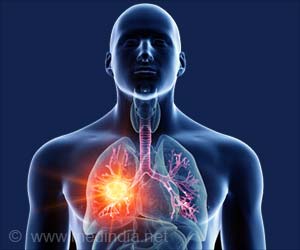CU Anschutz researchers have identified a connection between mucus in the small airways and pulmonary fibrosis.

‘These findings will pave the way for novel methods in early diagnosis and more accurate treatments for pulmonary fibrosis.’





Dr. Schwartz adds, "The findings in this manuscript provide a critical breakthrough in understanding the cause and potentially the treatment of IPF by demonstrating that excess mucus in the small airways can cause lung fibrosis, in part, by impairing the mechanism of lung clearance. In aggregate, these discoveries have provided the means to identify an at-risk population, diagnose the disease prior to the development of irreversible scarring, focus on a unique therapeutic target (MUC5B) and a specific location in the lung (distal airway), and create a novel pathway for therapeutic intervention for a disease that is currently incurable." Idiopathic pulmonary fibrosis is the most common type of progressive lung fibrosis. Over time, the scarring gets worse and it becomes hard to take in a deep breath and the lungs cannot take in enough oxygen. The average length of survival of patients with IPF is three to five years, and a critical unmet need is to identify patients before the lung is scarred irreversibly.
Mucociliary dysfunction is an emerging paradigm in lung diseases. Previously considered a characteristic specific to obstructive diseases such as asthma and chronic obstructive pulmonary disease, and genetic diseases such as primary ciliary dyskinesia and cystic fibrosis, the importance of mucins, mucus, and mucociliary interactions has surfaced in diseases of the lung periphery, such as adenocarcinoma and IPF.
The investigators on the current study in Nature Communications hypothesized that the potential role for mucociliary dysfunction as a driver of IPF pathology is supported by unique gene expression signatures in IPF. The investigators found that a specific genetic characteristic, known as the MUC5B promoter variant rs35705950, which results in a marked increase production of mucus in the lung is the strongest genetic risk factor for IPF. They also found this is the strongest risk factor for rheumatoid arthritis-interstitial lung disease.
The findings suggest that targeting MUC5B in the terminal airways of patients with preclinical stages of interstitial lung disease represents a strategy to prevent the progression of preclinical pulmonary fibrosis.
Advertisement
Advertisement











